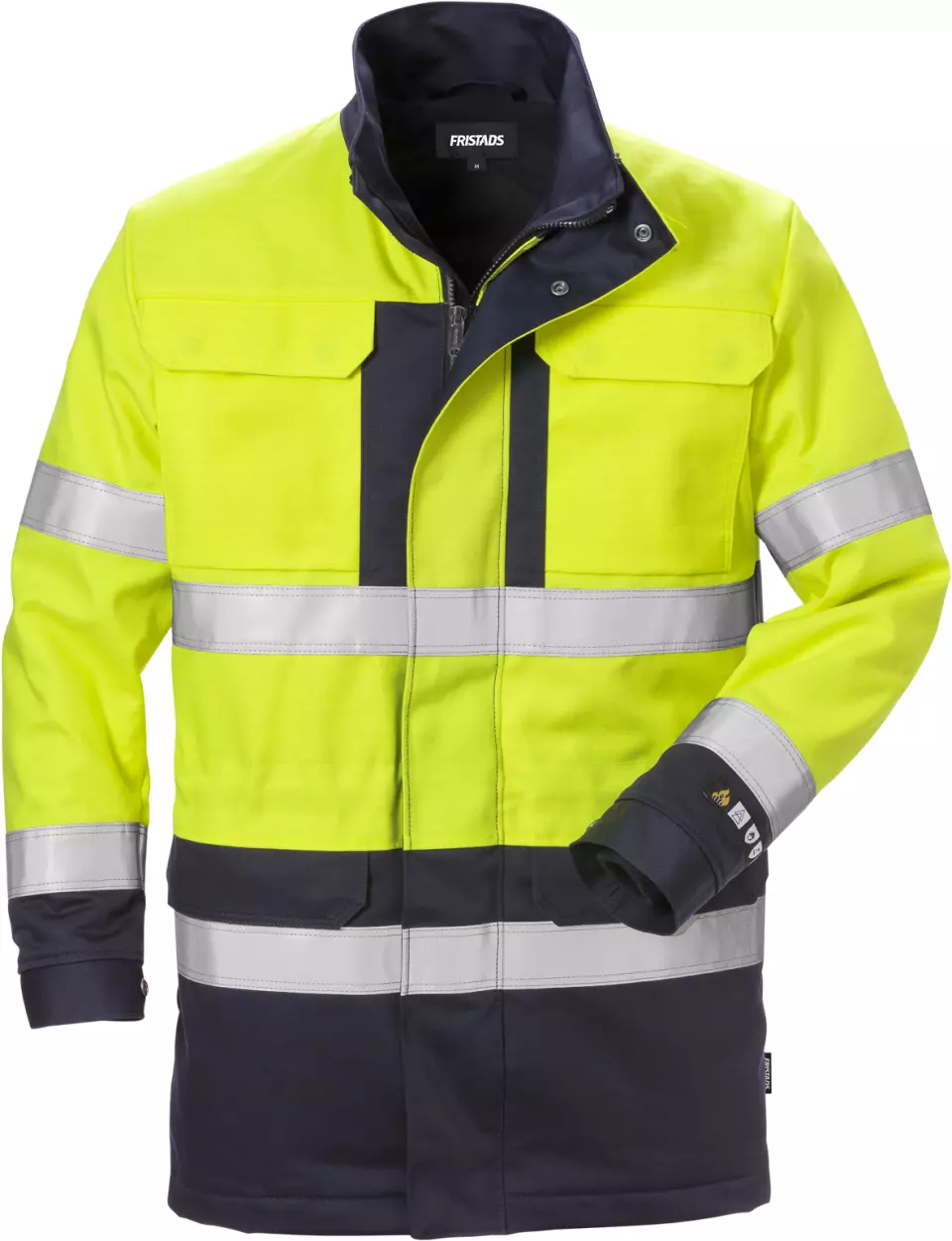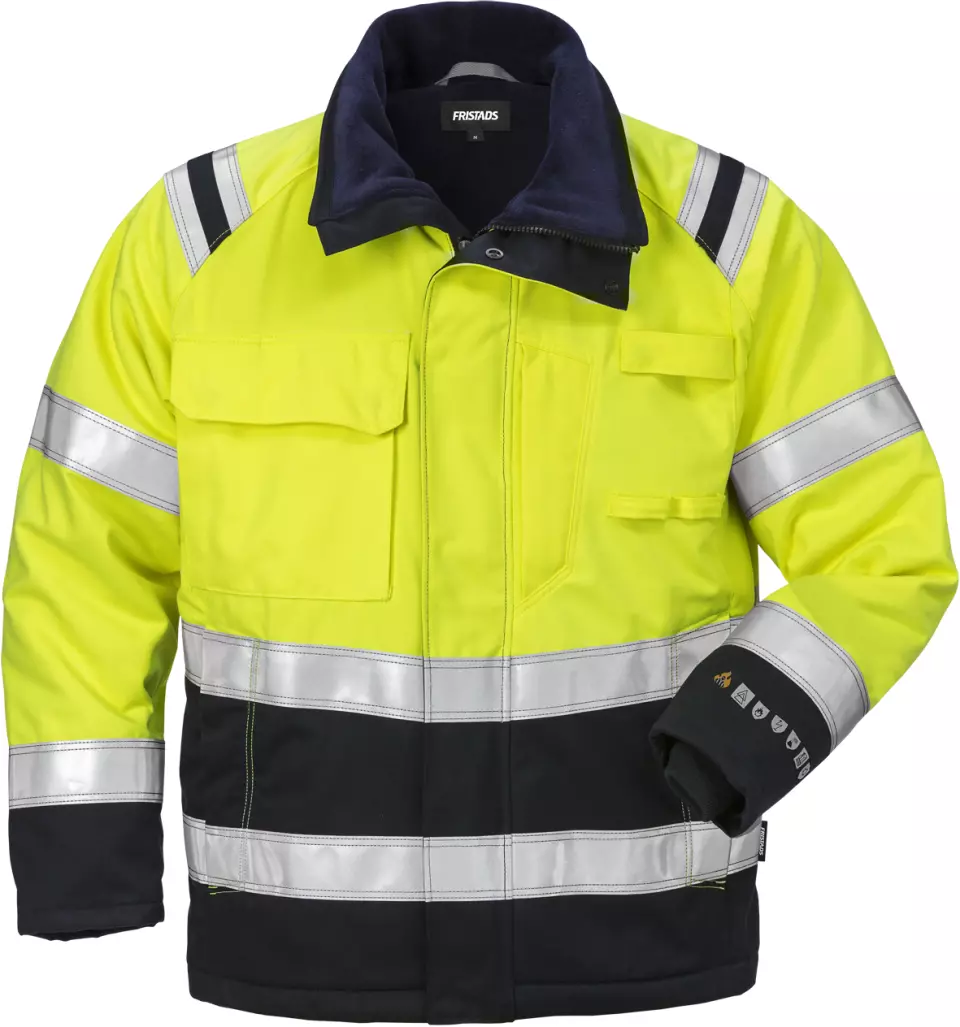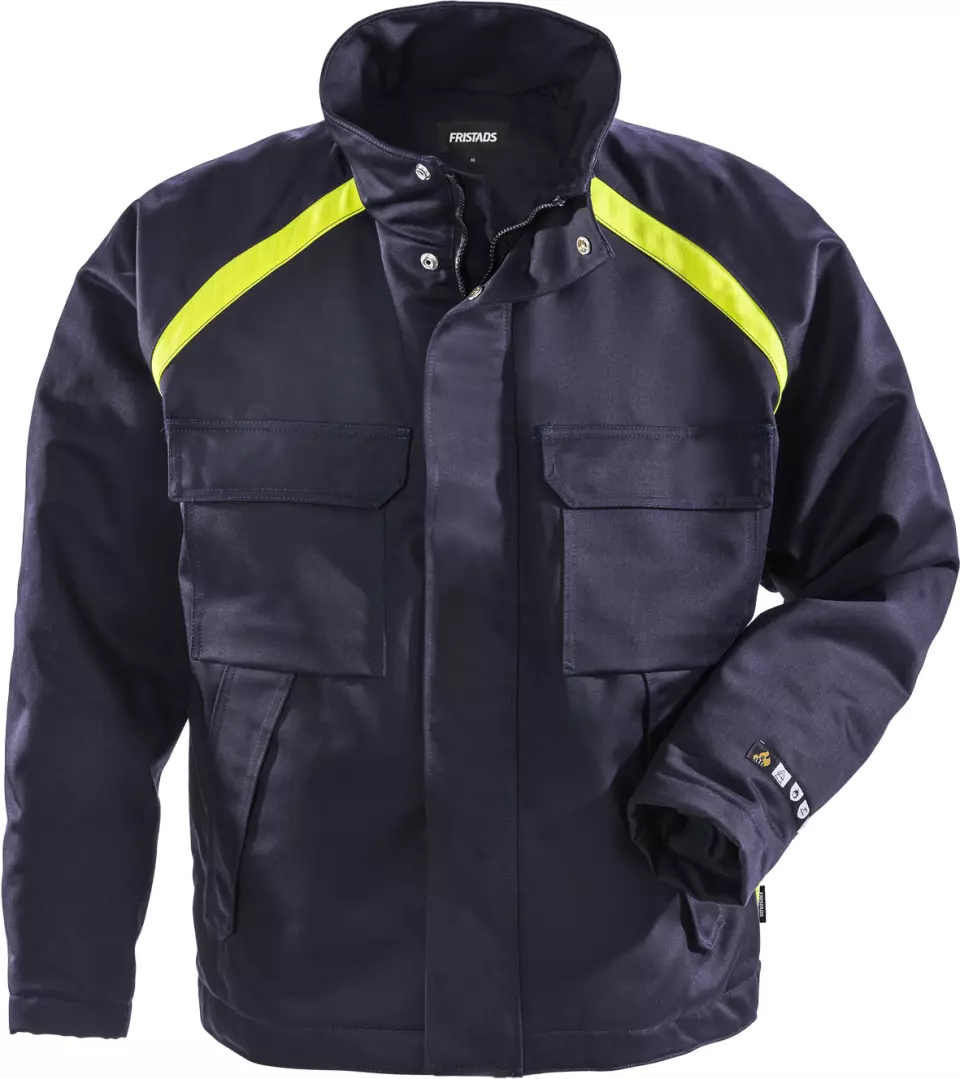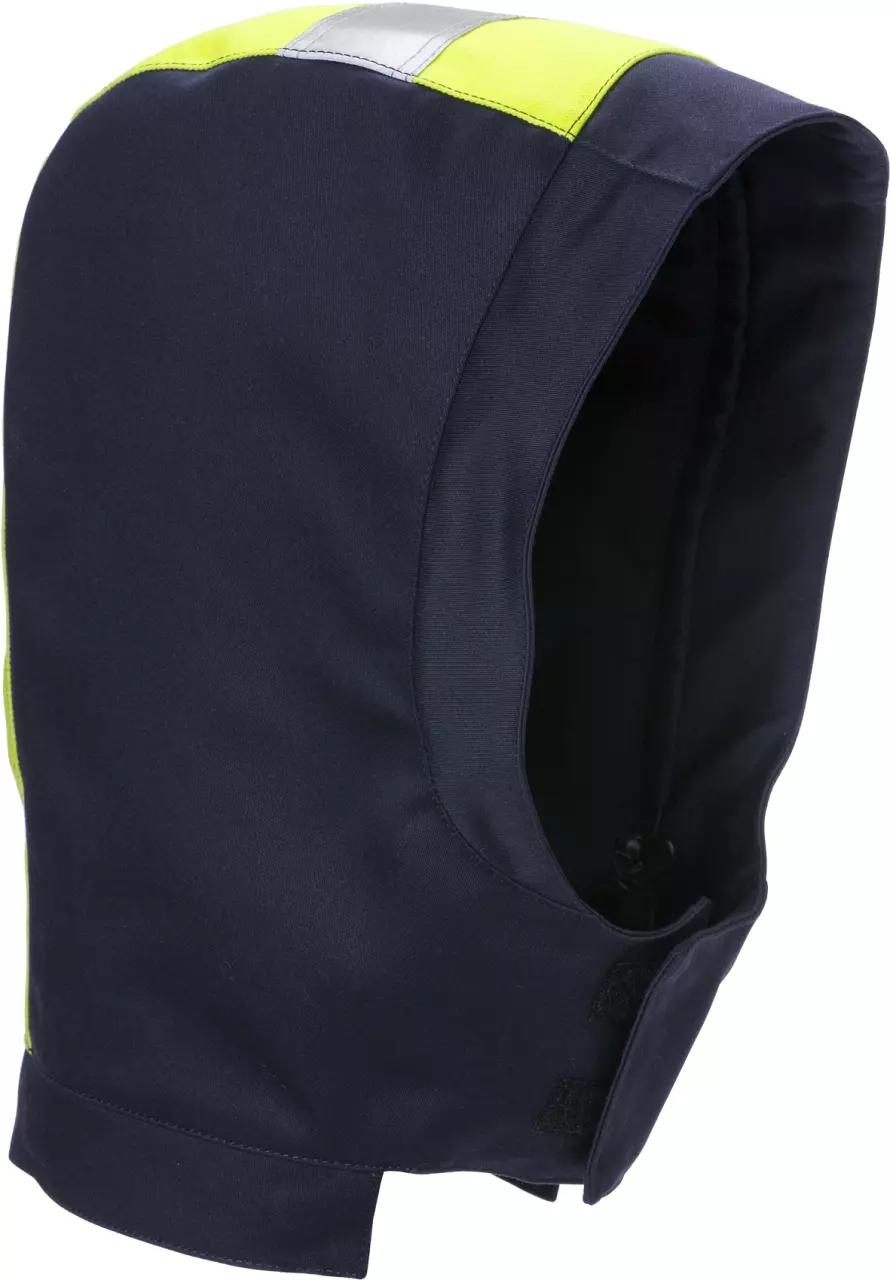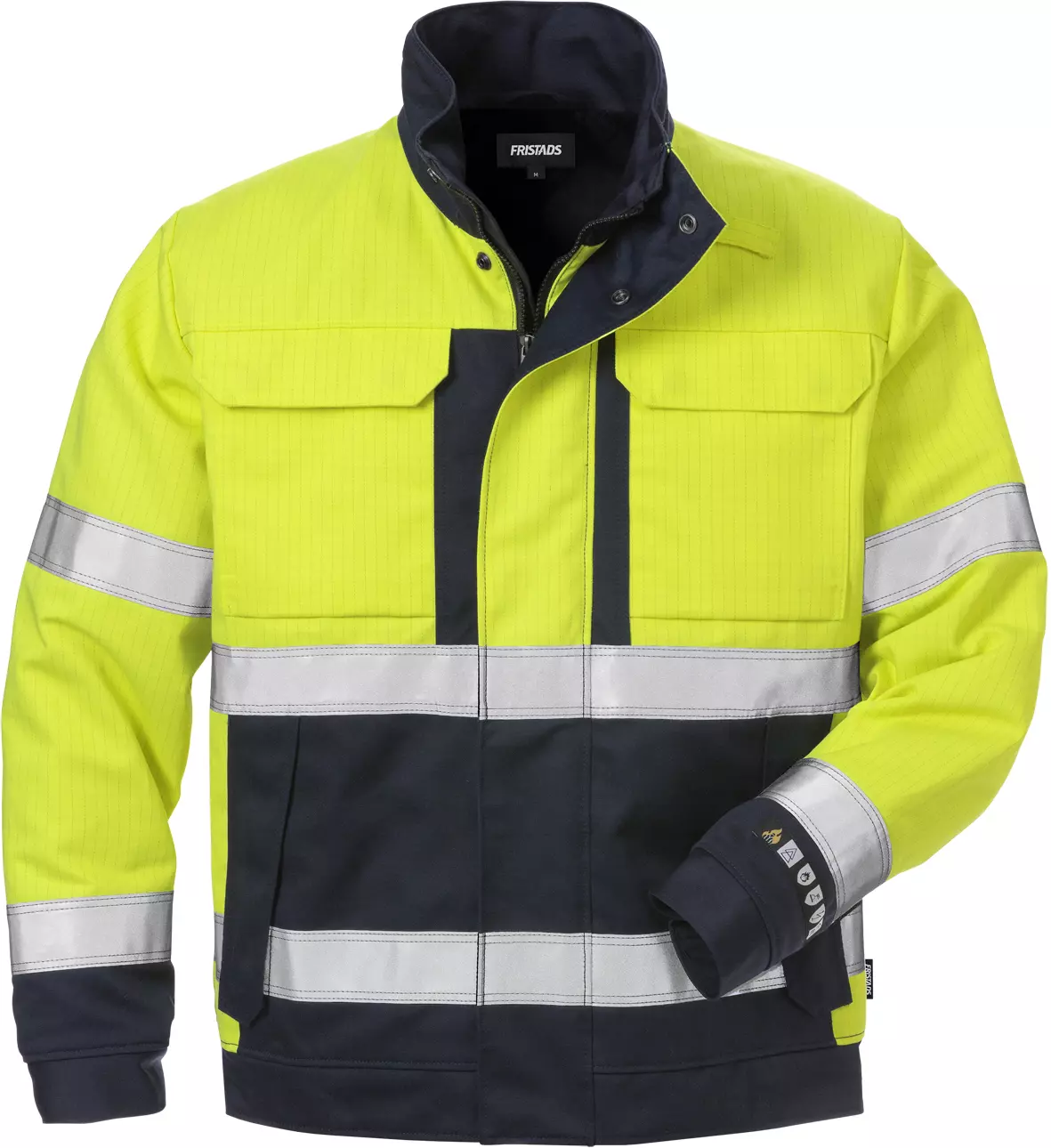
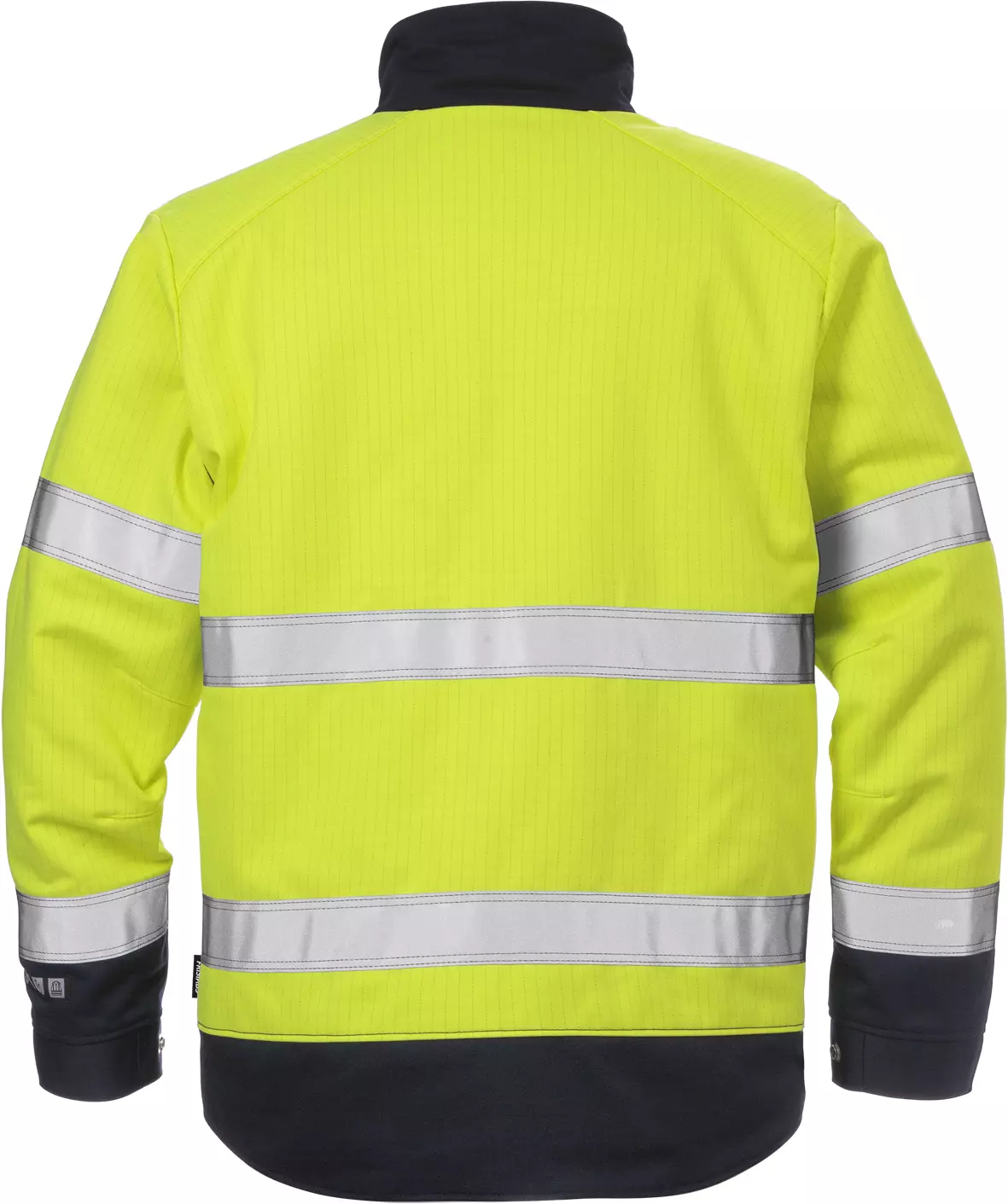
Features You'll Love
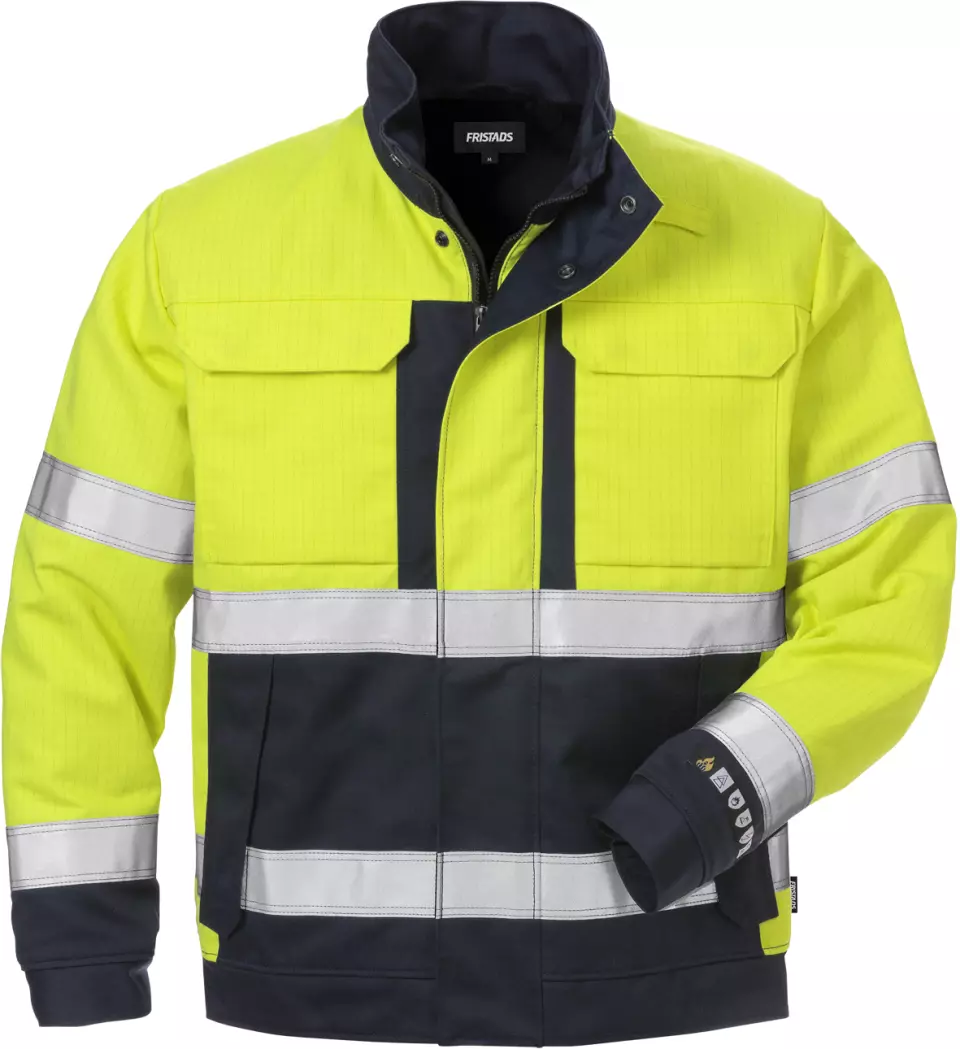
Material · Cotton, Polyester

Closure Style · Zipper
The method used to fasten the jacket or vest, affecting ease of use, security, and weather protection during work activities.

EN 20471 · Reflective Strip Area Grade 2
This garment provides an intermediate level of visibility for use in moderate-risk environments. It is suitable for work near traffic with speeds up to 60 km/hour, featuring a specified area of fluorescent material and reflective strips.
Fristads
Flame Retardant High Vis Winter Jacket Class 3 4588 FLAM
Flame Retardant High Vis Winter Jacket Class 3 4588 FLAM
5 / 5
267,06 €
Choose size
Free delivery
Features You'll Love

Material · Cotton, Polyester

Closure Style · Zipper
The method used to fasten the jacket or vest, affecting ease of use, security, and weather protection during work activities.

EN 20471 · Reflective Strip Area Grade 2
This garment provides an intermediate level of visibility for use in moderate-risk environments. It is suitable for work near traffic with speeds up to 60 km/hour, featuring a specified area of fluorescent material and reflective strips.
Product description
Flame-retardant high-visibility winter jacket that provides versatile protection for demanding industrial environments. The jacket combines flame protection, arc protection, antistatic properties and cold protection in one product. Extremely high arc protection makes it suitable for welding work and other high-risk applications.
Product features:
- Full lining under front placket with zipper to top of collar and concealed snap fastening
- Concealed snaps on collar for hood attachment
- Two flapped chest pockets with concealed snap fastening, one with D-ring on inside
- 2 front pockets with concealed snap fastening
- Snap-fastened inner pocket and phone pocket with flap and hook-and-loop fastening
- Waist adjustable with snaps
- Adjustable cuffs with snap fastening and elastic in cuffs
- Extended back panel
Technical specifications:
- Material composition: 75% cotton, 24% polyester, 1% antistatic fiber
- Quilted lining: 100% polyester
- Outer fabric: 365 g/m²
- Lining: 315 g/m²
- Approvals after 50 washes
- Tested according to industrial washing standard ISO 15797
Recommended applications:
- Multinorm applications
- Extremely high arc protection
- Approved for welding
- Heat and flame protection
- Cold work
Standards:
- EN 61482-1-2 APC 2
- EN 61482-1-1 ELIM: 43 cal/cm² ATPV: 48 cal/cm²
- EN ISO 11612 A1 B1 C1 E2 F1
- EN ISO 11611 A1 class 1
- EN 1149-5
- EN ISO 20471 class 2 (sizes XS-S) and class 3 (sizes M-3XL)
- EN 342
- ÖKO-TEX® PPE
- PRO mark
- U6
